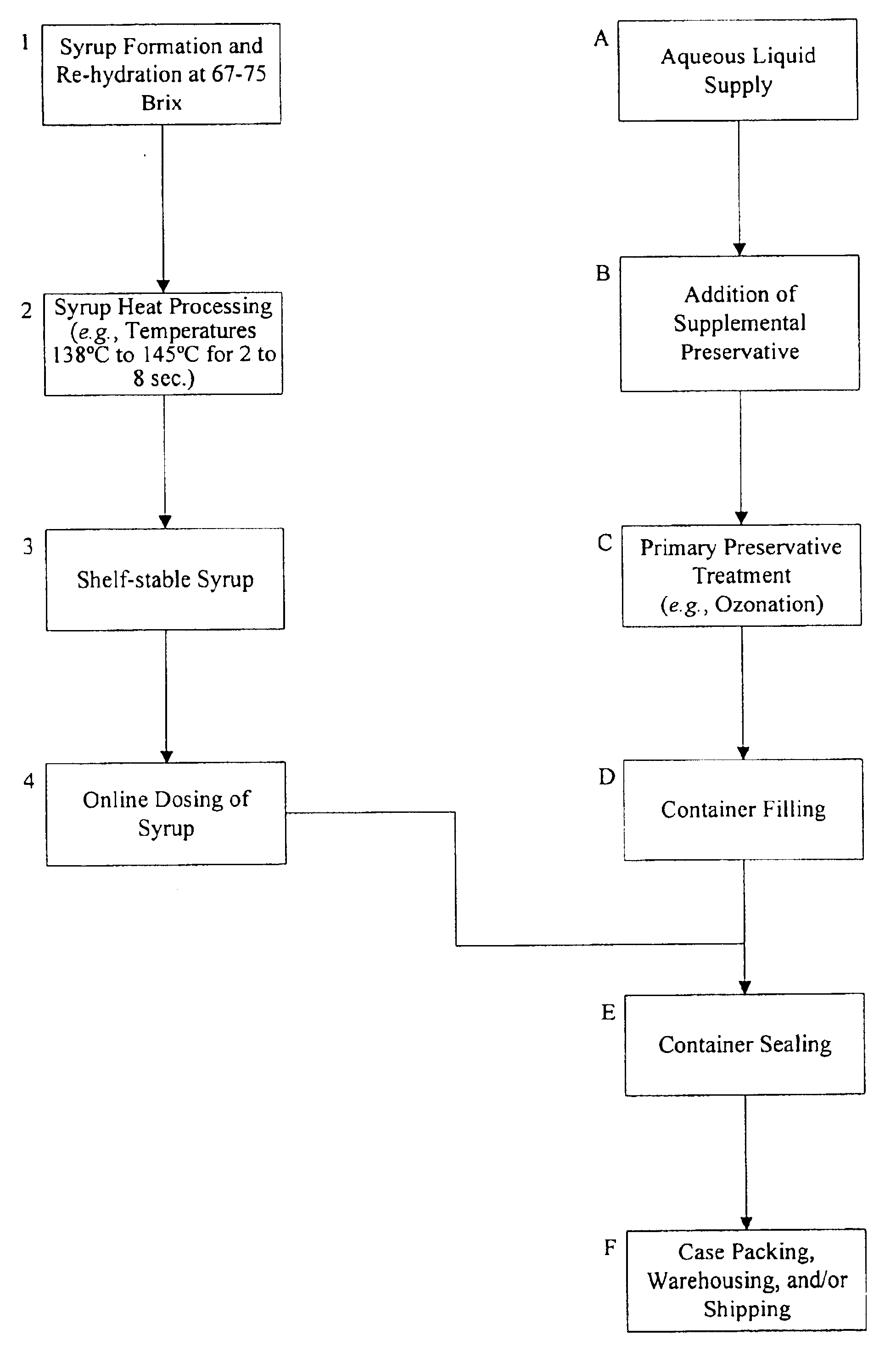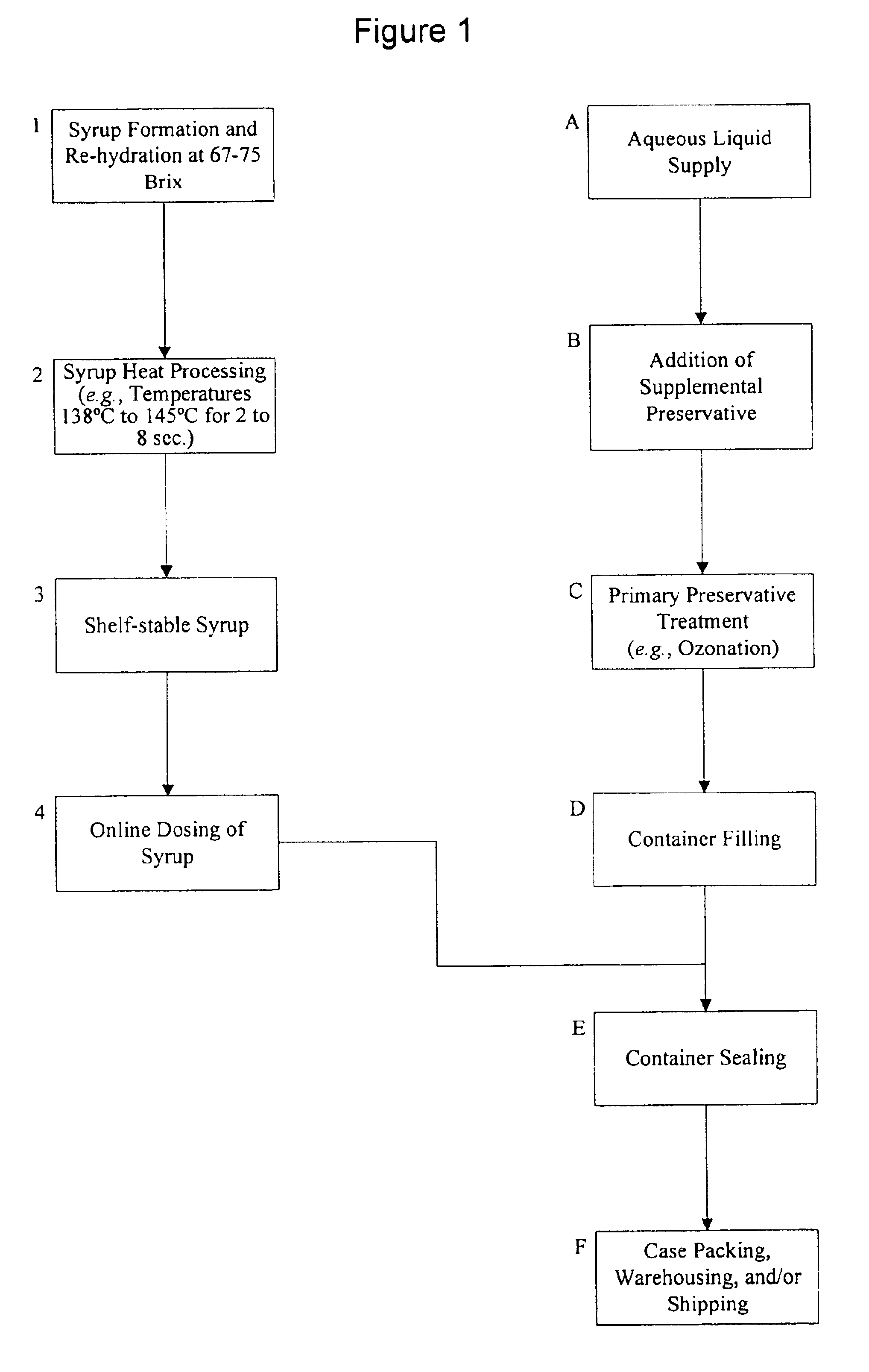Process for addition of a nutraceutical to a beverage
a nutraceutical and beverage technology, applied in the field of consumable drinks, can solve the problems of posing a significant challenge, prior processes lacked the ability to sanitize the liquid and its container, and difficult, sometimes insurmountable, barriers to selection, etc., and achieve the effect of minimizing activity loss and retaining sterility
- Summary
- Abstract
- Description
- Claims
- Application Information
AI Technical Summary
Benefits of technology
Problems solved by technology
Method used
Image
Examples
example 1
Forskohlin, Hydroxycitric acid and Fructooligosaccharides are added to a liquid medium, which is partially composed of water, to a final concentration of 67 to 75 Brix by weight to form a syrup as in FIG. 1(1). The Forskohlin, Hydroxycitric acid and Fructooligosaccharides may be added in a ratio of three grams of Hydroxycitric acid for every gram of Forskohlin and ten grams of Fructooligosaccharides for every gram of Forskohlin. The syrup is then heated to a temperature between 138° C. and 145° C., using a heat exchanger constructed in a shell and tube design with reverse flow, for a period of about 2 to 8 seconds as in FIG. 1(2), to produce a shelf-stable syrup as contemplated in FIG. 1(3). Other suitable methods for heating the syrup to similar uniform temperatures may be utilized.
A Brix concentration of about 67 or greater results in a syrup that is naturally resistant to microbial growth. The additional heat treatment results in additional sterility and an increase in the shelf-...
example 2
A supplemental sterilizing agent, such as a copper salt, may be added to the aqueous liquid of Example 1. A supplemental sterilizing agent such as a copper salt or the like is either a bacteriostat, which inhibits microbial growth, or a bacterioside. Thus, addition of the supplemental sterilizing agent prevents or slows the growth of any organism within the product. One aspect of the secondary sterilizing agent is to prevent the growth of spores or other sources of microbial growth that escape the primary sterilizing agent. Addition of a supplemental or secondary sterilizing agent, such as a copper salt, reduces the amount of primary sterilizing agent necessary to produce a shelf-stable aqueous beverage. Spores or microorganisms surviving the primary sterilizing agent are inhibited or killed by the secondary sterilizing agent, which is added to the beverage in an amount effective to prevent or inhibit the microorganisms.
In this embodiment, the nutraceutical activity is further prese...
PUM
 Login to View More
Login to View More Abstract
Description
Claims
Application Information
 Login to View More
Login to View More - R&D
- Intellectual Property
- Life Sciences
- Materials
- Tech Scout
- Unparalleled Data Quality
- Higher Quality Content
- 60% Fewer Hallucinations
Browse by: Latest US Patents, China's latest patents, Technical Efficacy Thesaurus, Application Domain, Technology Topic, Popular Technical Reports.
© 2025 PatSnap. All rights reserved.Legal|Privacy policy|Modern Slavery Act Transparency Statement|Sitemap|About US| Contact US: help@patsnap.com


